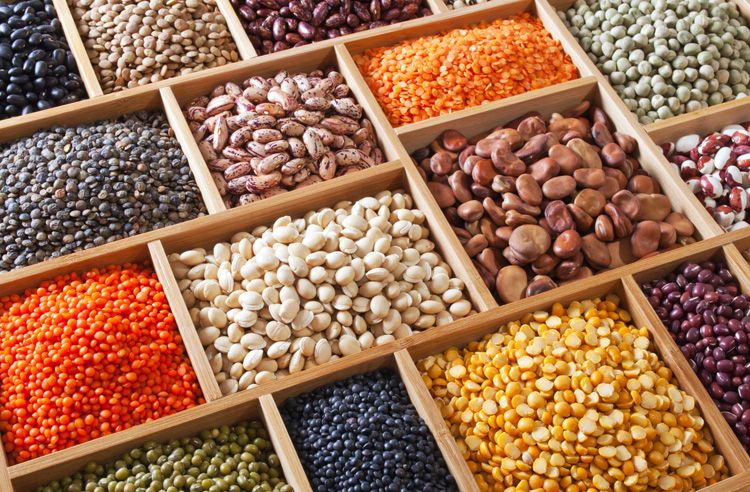
Brazil, Germany, Italy | Lentils
Thought to resemble coins, lentils represent prosperity and are traditionally served as the first meal of the year. Swelling during cooking signifies growth, thus, growth of wealth.
Italy loves green lentils with pork sausage. Brazil stirs up spicy lentil soup. Germany cooks lentils with pork and cabbage (three good luck foods – smart!)

American Northwest, Denmark, Italy, Poland and Germany | Fish
Preserved fish has a long culinary history as it was easy to transport long distances in brine without it spoiling. Popular preserved fishes are carp, sardines, herring, and dried salt cod. Sometimes the scales are saved for good luck and are said to bring fertility, long life and a bountiful harvest.
In the Pacific Northwest, Native Americans associate fish swimming with forward movement. Swimming in schools symbolizes abundance.
(Photo Courtesy of Thinkstock | iStockphoto)

China, Japan, and South East Asia | Noodles
In China, long noodles symbolize long life and are to be kept whole until the entire noodle is in your mouth. (Side note: Chinese New Year is January 23rd and 2013 is the year of the water snake.)
In Japan, soba is eaten at midnight on New Year’s Eve. The long noodle symbolizes a bridge from one year to the next.
(Photo Courtesy of Photodisc | Thinkstock)

Spain and Portugal | Raisins and Grapes
Eating 12 raisins or grapes at the stroke of midnight is believed to bring good luck for the upcoming year. Each sweet bite represents one prosperous month, a sour bite, less lucky. each sour grape signifies a less-than-lucky month. No sour grapes!
Sweden, Germany, Ireland | Cabbage
Cabbage is associated with luck and fortune because it is crisp and green like money. Greeks attribute it to good health because of its digestive qualities and healing properties.
(Photo Courtesy of Thinkstock | iStockphoto)

Black-eyed peas have been considered lucky in the Deep South since the Civil War, while during a battle in Mississippi, Confederate soldiers ran out of food while under attack. They happened upon black-eyed peas which were then declared lucky.
Eat your collard greens and greens will come! Southerners believe that these raw greens look like folded greenbacks (currency during the Civil War).
Cornbread is said to represent mountains of gold.
These three dishes served together calls for great prosperity.
(Photo Courtesy of Zoonar | Thinkstock)

Pomegranates are one of the oldest fruits known to man – tracing back to 3000 BC. It is associated with abundance, health, rebirth and fertility. In ancient Egypt, King Tut was buried with pomegranates to perpetuate reincarnation. In Islam, they were the prophet Muhammad’s favorite fruit.
(Photo Courtesy of Thinkstock | iStockphoto)









